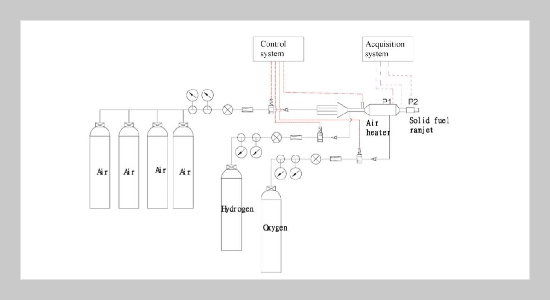Chang-Fei Zhuo This email address is being protected from spambots. You need JavaScript enabled to view it.1, Yu-Jiao Cai2, Yan-Yan Ma2, Gang Chai2 and Xiao-Ming Wang1 1School of Mechanical Engineering, Nanjing University of Science and Technology, Nanjing 210094, P.R. China
2Institute of Precision Equipment, Chongqing Changan Industries Group Co., Ltd, Chongqing 401120, P.R. China
Received:
April 9, 2018
Accepted:
December 7, 2018
Publication Date:
June 1, 2019
Download Citation:
||https://doi.org/10.6180/jase.201906_22(2).0008
The high-speed ramjet kinetic energy projectile uses the solid fuel ramjet as its power plant to increase end velocity and its strike force. The solid fuel ramjet relies on self-ignition to start work. This study adopts polyethylene as a solid fuel of solid fuel ramjet, and uses an air heater in the ground laboratory to generate the inflow air with high enthalpy for the propose of simulating high Mach number flight condition. The experiment of solid fuel ramjet under the inflow air with high enthalpy is carried out. It discusses the effect law of nozzle throat diameter and air mass flow rate on the self-ignition characteristics and the burning rate of solid fuel. The experimental results show that:With the increase of nozzle throat diameter, the pressure in the entire flow channel gradually decrease, the operation state of the solid fuel ramjet gradually changes from stable operation, unstable operation, and no self-ignition. The pressure in the combustion chamber has almost no influence on average burning rate of solid fuel. With the increase of air mass flow rate, the pressure in entire flow channel increases and the burning rate of solid fuel also increases.ABSTRACT
Keywords:
Kinetic Energy Projectile, Solid Fuel Ramjet, Self-ignition Characteristics, Burning Rate Characteristics
REFERENCES
















